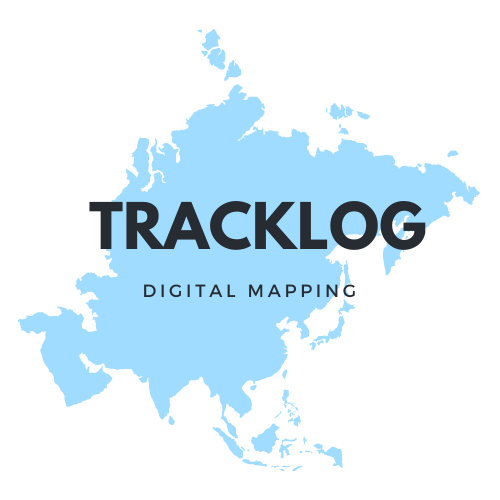Precision Agriculture Geography Historical Culture Systems for Geographic Information Habitats for Remote Sensing Cultural Setting See every Topic To Mendeley, add Obtain as PDF Regarding this page Cartography International Encyclopedia of the Social & Behavioral Sciences, J. M. Olson “The discipline concerned with the creation, production, dissemination, and study of maps” is known as cartography. The study of cartography is a field of study that is most frequently found at geography departments in North America, but it is also frequently studied independently in other parts of the world. One of many mapping sciences, it. In the field, “research” can mean either the methodical search for new knowledge regarding maps or the collection of data from which a topographic map is compiled. Cartography has evolved from its origins in gestures and marks on the ground to a highly complex and varied field that makes use of information from aerial photographs, satellite images, global positioning systems, as well as other sources, in response to shifting social, intellectual, and technological innovations. Scale, projection, geographical relationships, generalization, symbolization, and data modeling are important ideas in cartography. Maps can be of the general reference kind (displaying a range of distinct individual characteristics), thematic (displaying a distribution), or fall somewhere in between.
Molecular cartography is a fresh approach
The study of interacting genes and gene products that determine each individual cell’s activity and specialization in relation to tissue and organ function, as well as cell-to-cell communication, is known as molecular mapping. Every area of physiology, including immunology, is relevant to molecular mapping. The basic information and comprehension of the genomic, proteomic, and interactomic processes that govern the origin, stability, and activity of immune cell populations, as well as the methods by which the psychoneuroendocrine system governs immunity, are provided by molecular mapping. It results in a fundamental understanding of the mechanisms that control immune suppression.
Mapping
Mapmaking is the art and science of cartography. Until at least the 1980s, drawing maps with instruments like technical pens and t-squares and having a steady hand required a great deal of practice. Since the development of GIS, manipulation of computer visuals has become the primary method for developing cartographic abilities. Maps are abstractions of the real world, but when designed well, they may swiftly convey a message to a user. According to Wing and Bettinger (2008), a person drawing a map should have the following in mind: Figure 3.11 is a management map that shows the Lincoln Tract’s proposed harvest regions over a 5-year period. The message or narrative that the map is trying to convey the intended audience for the map and what they want to see how information is shown on the map Format of the map’s printed or digital version The goal of creating a map, which is typically a two-dimensional representation of a terrain, should be to create a visual that effectively conveys a message. The majority of GIS software packages offer the capacity to create complex maps with relative simplicity. With the introduction of three-dimensional printing, this could soon alter. A north arrow, the suitable scale, and a clear legend are requirements for a professional map. Important map parts also include annotation, such as a description of the mapmaker and the date the map was created.
Information Representation for Public Health
Cartography is both an art and a science. One of the most significant outcomes of a GIS analysis is a map of the findings. Typically, choropleth or shaded maps are used to display survey or aggregate data. Dot maps can be used to visualize density or count data. Symbols are typically used to denote point characteristics, such as healthcare facilities or community places. The user can alter or set the scale, extent, and symbology of electronic maps or GIS visualization. Results must be represented carefully on maps; Mark Monmonier’s How to Lie with Maps is probably the most complete resource on the topic. The modifiable area unit problem (MAUP) and ecological fallacy are two of the most prevalent problems with map depiction. Even while the majority of public health specialists are likely familiar with the ecological fallacy (which states that conclusions drawn from aggregated data may or may not apply to individuals or units below the aggregation), the majority are not, however. In order to demonstrate how cholera cases might be aggregated to various levels of geography, Monmonier uses the example of the Broad Street cholera outbreak. The MAUP is made up of the aggregate level of units, geographic size and distribution of the units, and total number of units. This issue is typically dealt with in GIS by performing an analysis at multiple scales to verify the accuracy of the findings.
Methods of Mapping and Cartography
The basic descriptive science of cave cartography. The best way to explore a cave is to plan it out as you go. Understanding the hydrology, geologic history, and potential linkages to neighboring caves are all possible only with the aid of a detailed map of the cave. A cave map is a crucial piece of evidence for proving that a cave is a genuine natural resource. Early maps of fish caves sometimes consisted of compass and pace surveys or hand-drawn sketches, which are highly imprecise in big tunnels. Maps of caves are used to mark the locations of various scientifically significant sites, such as bat roosts and habitat. The unique issues of speleology and cave biology are covered in great detail in the literature, but an excellent introduction may be found in Elliott’s article on cave protection in Elsevier’s 2007 Encyclopedia of Caves and Karst.The earliest published cave map of the area was created during the 1940 trip to Cueva Chica. Charles Breder utilized a small plane table with a drawing sheet mounted on a tripod, along with a tool for measuring distances and drawing lines optically to a stadia rod that he could see through a telescopic alidade. This approach works well for surveys conducted outside but is ineffective in rough, gloomy caves. As they neared the lower end of the cave, the inaccuracies in their map become more and more obvious. Between 1970 and 1974, the author remapped the cave using what was considered conventional cave surveying tools at the time, including a steel survey tape, a Brunton pocket transit, a tiny magnetic compass with sights, and a clinometer for gauging slopes. Geologists, the military, and other field professionals still utilize similar equipment. Most cavers switched to the Suunto or a similar liquid-filled compass and clinometer in the 1970s and 1980s because it facilitates portable, point-to-point surveying. The taped distance, magnetic azimuth (bearing), inclination, and LRUD (left, right, up, down) distances at each numbered station are all meticulously recorded in a book in all scenarios. Plans, profiles, and cross-section drawings are prepared with great attention to scale. A survey team consists of three or four cavers, and it may take several teams or visits to map the entire cave.
The Sixth Dimension of Professional Knowledge
While the above-described cartography focuses on the semantic content, or the various areas of teacher knowledge, it is also important to distinguish between the psychological structure of knowledge, or the standard of mental representation. Further conceptual differentiations are needed in this regard. The distinction between declarative knowledge (such as understanding of facts and relationships) and procedural knowledge is one that is frequently made but is quite ambiguous. However, more accurate theoretical differentiations of knowledge categories, such as those put out by, for instance, de Jong and Ferguson-Hessler, are needed for empirical assessments of teacher expertise. The writers distinguish between many types of knowledge, such as situational knowledge (relating to common occurrences and situations), conceptual knowledge (concerning facts and concepts within a particular field), procedural knowledge (concerning actions), and strategic knowledge. But not only one knowledge type contains the aforementioned knowledge domains. For instance, curricular knowledge comprises episodes with typical task forms for the lesson, in addition to conceptual information, which is instantly obvious. In a similar vein, the educational philosophy should not only be categorized as strategic knowledge but also include parts of conceptual knowledge.The formation and growth of expertise need a number of various types of learning, which can be explained by a varied differentiation of content domains and knowledge categories.

In order to create the precise map, we need to include geographic data; look through some topographic maps, a world map, some other paper maps; search geographic information systems; enquire for modern cartography, map making. Making maps is a really difficult and responsible task which demands spatial data, a proper map production and sometimes even a satellite imagery.

